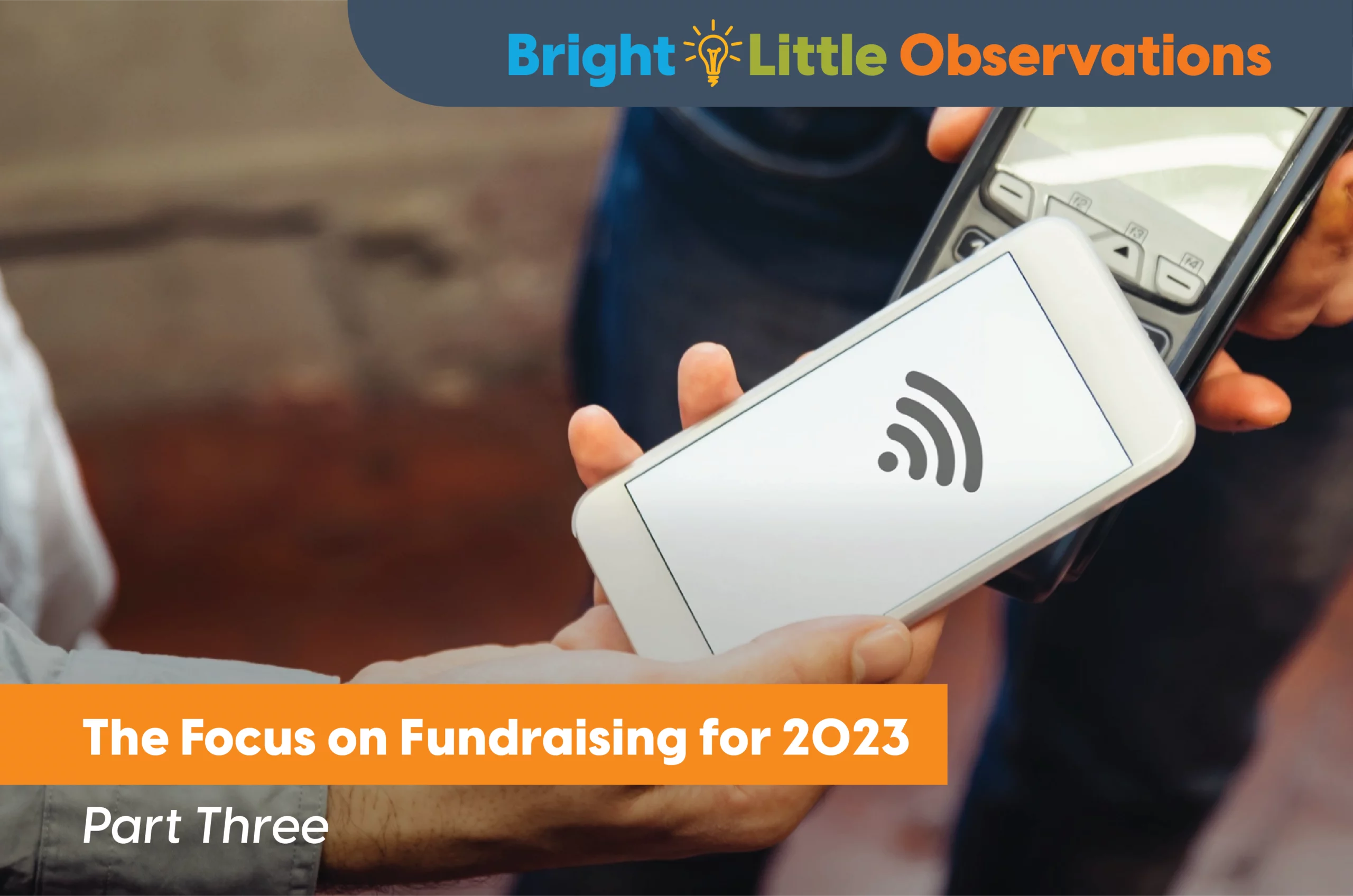


Welcome back for Part Three of Summit Marketing’s Focus on Fundraising for 2023. In this final series, we examine these trends: “Emphasis on new technology,” “Rise of giving vehicles,” The elements of age and volunteerism” and “Mission matters more than ever.”
7. Emphasis on new technology
Driven by necessity during the pandemic, mobile and contactless giving options quickly gained traction and continued to accelerate. “In today’s hectic world, donors are looking for fast, easy, clean and secure ways to support their favorite causes,” says Aaron Robison, Summit Marketing’s Director of Digital, “and they’re embracing streamlined platforms.”
Aaron’s favorites: Digital wallet options such as Apple Pay, Google Pay, Venmo and PayPal enable smartphone users to avoid entering credit card details when donating. Text-to-donate allows donors to easily support your organization anytime, anywhere, from mobile phones. And mobile-responsive donation pages with larger buttons, pre-set donation amounts and limited navigation options can be designed to work on any mobile device. What’s more, campaigns like VISA’s Tap to Give – which partnered with The Salvation Army for a successful pilot campaign in 2021 – are becoming increasingly more popular for their sanitation and security features.
Did you know? With less cash in our pockets and purses, 70% of charities are reporting a drop in cash donations. Contactless payment technology is a natural way forward, replacing the need for pocket change.
How we can help: Summit Marketing’s omnichannel strategies offer guidance and tools for building and sustaining a seamless and effective digital platform.
8. Rise of giving vehicles
An unprecedented shift is underway in our country, impacting multiple generations simultaneously. Baby Boomers – those born between 1946 and 1964 – are passing wealth to the next generation at an extraordinary rate. Many sources predict that more than $68 trillion in assets will change hands within 25 years.
Get ready: As younger generations inherit these proceeds, their giving habits will change the face of fundraising. According to Classy, Millennials and Gen-Zers tend to be more hands-on with their investments, with 40% indicating they check investments daily. These discerning beneficiaries are more likely to turn to investment-based giving, with younger generations twice as likely to give through structured giving vehicles such as Donor Advised Funds (DAFs). According to Osili, research by the Lilly Foundation finds tools like DAFs and planned giving have taken on increasingly greater significance since the pandemic.
Tammy’s tip: “Many donors are already utilizing DAFs to make gifts to your organization, but it’s probably not something they think about on a daily basis. So, it’s important to remind them often of the good their gifts can accomplish and why additional grants from their fund are needed.”
Did you know?: The Salvation Army is among the top five organizations to receive DAF grants from several major funds, including Fidelity Charitable, Vanguard Charitable and Schwab Charitable.
The bottom line: As you look to diversify fundraising, DAFs and non-cash gifts will be particularly fruitful as those options are typically larger than traditional cash gifts.
How we can help: Summit has introduced a new line of tools to promote Planned Giving, DAFs and other structured giving vehicles to your donors and help your team secure more grants.
9. The elements of age and volunteerism
Currently, individuals from as many as six generations (Greatest Generation, Silent Generation, Millennials, etc.) could make up your pool of supporters. And unsurprisingly, according to Fortune Magazine the assistance a nonprofit receives depends in part on the age of its donors.
What data shows: Younger Americans more often report taking action over the last year while older generations, who are financially better off, more often cut checks. For example, 49% of adults aged 44 and younger volunteered in the last year, as compared to 31% of their elders. The younger cohort also more often attended a fundraising rally or event. Conversely, those 45 and up more often made a financial contribution.
The opportunity: As charitable dollars become uncertain and unpredictable, nonprofits should double down on their efforts to appeal to younger “donors” who are eager to give of their talent and time.
Consider this: “Tap into the skills of local young communications professionals who could help write grants or IT specialists who could assist pro-bono with technology,” suggests Brian Smith, Summit Marketing’s Director of Engagement & Integration. “Be creative in pairing your areas of need with the abilities of those who want to help. Building those relationships now could lead to financial support as they grow in their careers.”
How we can help: Summit Marketing offers Volunteer University, an on-site training session to increase volunteer recruitment and engagement. In addition, our Community Engagement tools can help your team retain and cultivate volunteers who will add long-term value to your organization.
10. Mission matters more than ever
While the economic climate may be top of mind, it isn’t the only issue impacting nonprofits today – and especially their fundraising teams. Among others are competing political agendas and social ideologies that may leave donors overwhelmed and confused. In fact, explains Una Osili, “donors are frequently putting cause first – choosing to support nonprofits whose missions align with their personal beliefs rather than those with greatest name recognition.
In times like these: Whether donor or fundraiser, it’s easy to get caught up in concerns that cloud our judgement, cause anxiety and lead us to lose focus on what matters most.
The solution, according to Summit Marketing’s Director of Client Services, Francie Hughes, “is to keep your nonprofit’s mission front and center”.
What we’re saying: Set your focus on your mission and your organization’s relationship with your donors. Choose channels and giving options that best meet your donors’ preferences and can best convey your story. Avoid issues that might confuse donors or shift their attention away from your work. Break through the noise and clutter with a clear message that cements donors to your organization.
In a nutshell: “Tell your story in a way that touches donors’ hearts – how and when they prefer – and tell them how they can help,” says Francie Hughes. “And when they do, tell them precisely how their gift made a difference and how much they’re appreciated.”
How we can help: For 36 years, Summit Marketing has continued to create innovative solutions that meet the unique needs of nonprofits. We develop new resources, campaign strategies, message platforms and creative tactics from research, data and reporting. Our omnichannel marketing plans create powerful, multi-faceted solutions for your organization. If you’re a client partner of ours, we thank and support you. If not, let us help you navigate the economic landscape of 2023 to keep your mission front and center in times like these.